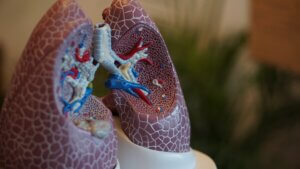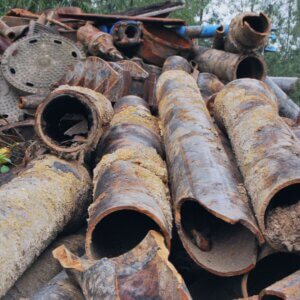The Risks Associated with Lead Dust Cleaning
The Risks Associated with Lead Dust Cleaning
Lead dust is a significant concern when it comes to the safety of our homes and our health. Whether you’re a homeowner, renter, or simply want to be informed about potential risks, understanding the dangers associated with lead dust is crucial and the importance of lead dust cleaning. In this comprehensive guide, we will explore the risks of lead dust exposure, its sources, and the importance of professional lead dust cleaning. From the hazards it poses to vulnerable populations to the preventive measures you can take; this article aims to provide you with the knowledge and resources to address the risks of lead dust effectively.
The Risks of Lead Dust Exposure
Lead dust presents numerous risks, particularly when it is inhaled or ingested. The health effects of lead exposure can be severe, especially for children, pregnant women, and individuals with pre-existing health conditions. Here, we delve into the specific risks associated with lead dust and its potential consequences if professional lead dust cleaning is not undertaken.
Developmental Issues in Children
Exposure to lead dust is especially harmful to young children as their bodies are still developing. Even low levels of lead in their system can lead to learning disabilities, behavioural problems, and a decrease in IQ. Prolonged exposure to lead dust may result in irreversible damage to the child’s cognitive abilities, affecting their overall development and future opportunities. Lead dust cleaning is therefore highly recommended if you suspect lead exposure in your home or property with children.
Neurological Disorders
Lead is a neurotoxin, meaning it can damage the nervous system. Inhaling or ingesting lead dust can lead to various neurological disorders, including memory loss, difficulty concentrating, and impaired motor skills. These effects can be long-lasting and significantly impact an individual’s quality of life. Professional lead dust cleaning services can mitigate these risks with specialised equipment and expertise to ensure health and safety.
Cardiovascular Complications
Research has indicated a correlation between lead exposure and cardiovascular issues. High levels of lead in the bloodstream can contribute to hypertension, heart disease, and an increased risk of heart attacks. Minimizing lead dust exposure with lead dust cleaning is essential for maintaining a healthy cardiovascular system.
Reproductive Health Concerns
Lead dust exposure can also affect reproductive health, both in males and females. In women, lead exposure during pregnancy can result in complications such as premature birth, low birth weight, and developmental problems in the child. Men who have been exposed to lead dust may experience reduced fertility and an increased risk of sperm abnormalities.
Renal Damage
The kidneys are vital organs responsible for filtering toxins from our bloodstream. Lead dust exposure has been linked to renal damage and an increased risk of kidney disease. Protecting yourself from lead dust with specialist lead dust cleaning is crucial for maintaining optimal kidney function.
Respiratory Issues
Inhalation of lead dust particles can lead to respiratory problems, particularly for individuals with pre-existing conditions such as asthma or chronic obstructive pulmonary disease (COPD). Exposure to lead dust may worsen symptoms and contribute to the development of respiratory disorders. Do not hesitation to contact lead dust cleaning specialists if you suspect lead exposure.
Behavioural and Mood Disorders
Lead exposure, particularly during childhood, has been associated with an increased risk of behavioural disorders and mood disturbances. Children exposed to lead dust may exhibit aggression, impulsivity, and hyperactivity. Adults may experience mood swings, depression, and anxiety as a result of lead exposure requiring immediate lead dust cleaning.
Increased Susceptibility to Infections
Lead dust can weaken the immune system, making individuals more susceptible to infections and illnesses. Reduced immune function can hinder the body’s ability to fight off pathogens, leading to more frequent illnesses and prolonged recovery times.
Damage to Multiple Organ Systems
Lead is a toxic metal that can accumulate in various organs, including the liver, brain, and bones. Prolonged exposure to lead dust can cause damage to these organs, leading to a range of health issues. Protecting yourself and minimizing exposure through professional lead dust cleaning is vital for safeguarding your overall health.
Sources of Lead Dust
To effectively mitigate the risks associated with lead dust, it’s crucial to identify the common sources of contamination. By understanding where lead dust can originate, you can take appropriate lead dust cleaning measures to prevent exposure.
Lead-Based Paint
One of the most common sources of lead dust is deteriorating lead-based paint. Homes built before 1978 are more likely to contain lead-based paint, which poses a significant risk if it starts chipping, peeling, or cracking. Renovations or repairs that disturb lead-based paint can also release lead dust particles into the air requiring lead dust cleaning.
Soil Contamination
Soil near older buildings or structures painted with lead-based paint can become contaminated with lead over time. Lead dust from deteriorating paint can settle into the soil, posing a risk, especially in areas where children play or where homegrown produce is cultivated requiring immediate lead dust cleaning services.
Imported Goods
Certain imported goods, such as toys, jewellery, pottery, and cosmetics, may contain lead or have been produced using lead-based materials. These products can contribute to lead dust contamination, particularly if they are handled frequently or if their surface deteriorates.
Industrial Activities
Industrial activities, such as lead smelting, battery manufacturing, and certain construction processes, can release lead particles into the air. These particles can settle as dust on surfaces both inside and outside the affected areas, posing a risk to nearby communities. Industrial facilities often require regular lead dust cleaning to mitigate risks.
Plumbing Systems
In homes with older plumbing systems, lead can be present in the pipes and solder used for plumbing connections. Over time, the corrosion of these pipes or disturbance during repairs can lead to the release of lead particles into the water supply, potentially resulting in lead-contaminated dust.
FAQs
Here are the top 5 frequently asked questions about lead dust cleaning to further expand your knowledge.
What is lead dust and why is it a concern?
Lead dust is fine particles that contain lead, which can be released from deteriorating lead-based paint or other lead-containing materials. It is a concern because lead is a toxic metal that can pose serious health risks, especially to children and pregnant women.
How does lead dust cleaning help reduce exposure?
Lead dust cleaning involves removing or minimizing lead-contaminated dust from surfaces and objects in order to reduce the risk of ingestion or inhalation. By properly cleaning and maintaining surfaces, you can help prevent lead dust from being easily accessible to children or becoming airborne.
What are some recommended methods for cleaning lead dust?
The following methods are commonly recommended for cleaning lead dust:
- Wet cleaning: Use water or a cleaning solution with a low-phosphate detergent to wipe surfaces and objects.
- High-efficiency particulate air (HEPA) vacuuming: Use a vacuum cleaner with a HEPA filter to remove dust from carpets, rugs, floors, and other surfaces.
- Mop or sponge cleaning: Damp mop or sponge hard floors to pick up dust particles effectively.
Are there any specific precautions to take during lead dust cleaning?
Yes, it is important to take certain precautions when cleaning lead dust:
- Wear protective clothing, including gloves and a properly fitted respirator mask.
- Keep the area well-ventilated by opening windows or using fans.
- Minimize the spread of dust by using wet cleaning methods and avoiding dry sweeping or vacuuming without a HEPA filter.
When should I consider professional help for lead dust cleaning?
It is advisable to seek professional help for lead dust cleaning in the following situations:
- Large areas or extensive contamination that may require specialized equipment or expertise.
- If you are uncertain about how to effectively clean or test for lead dust.
- When dealing with complex structures or surfaces that may require professional assessment and remediation.
The risks associated with lead dust cannot be overlooked. Understanding the potential health effects and knowing how to identify and address sources of lead dust contamination are crucial steps towards safeguarding yourself and your loved ones. By taking appropriate preventive measures and seeking professional assistance when needed, you can create a safer and healthier environment. Stay informed, stay vigilant, and take action to protect against the risks of lead dust.
Why Choose AllAces?
Lead dust cleaning does not allow for any margin of error. It can be a slow process and requires specialised equipment and procedures to ensure proper extraction and sanitisation. Our AllAces Cleaning & Restoration team follow very clear guidelines to ensure the safety of everyone involved in the process. Do not let your people, clients and their families be subjected to the nasty side effects of lead exposure.




